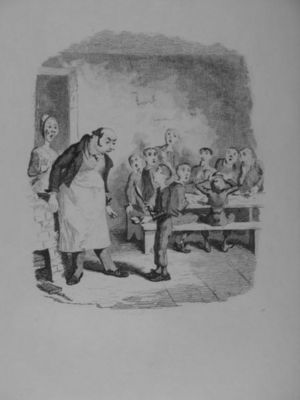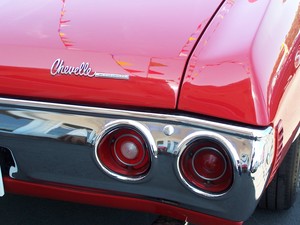Picking names for your fictional characters is much like naming your children. Each is a careful decision that you will have to live with for a long time to come. Picking just the right name for your fictional character involves more than thumbing through a book of baby names to find something that sounds good. Character names, just like every other element in a screenplay or novel, should serve multiple functions. A good character name is distinctive and memorable. A great character name, in addition to being distinctive an memorable, also works to help tell your story. The following examples illustrate different ways to advance your storytelling through carefully named characters.
Rocky
Author: Sylvester Stallone
Character names: Rocky, Apollo
Rocky contains an excellent use of character names to highlight the story’s external conflict. In the movie Rocky fights Apollo Creed, the undefeated heavyweight champion of the world. This name pair works on many levels. Apollo, the name of a god. Rocky, a stone, a pebble, something that just sits there. In a fight between a god and a rock, who do you expect to win — the god, with all his awesome powers, or a rock — something hard, that would take a sledgehammer to break? Serving as a metaphor for the film, these names fit the story’s climactic fight, as the god wails away with all his incredible might while the rock takes it and lasts.
To Kill a Mockingbird
Author: Harper Lee
Character names: Atticus Finch, Jem, Scout, Tom Robinson, Bob Ewell, Boo Radley, Mayella Violet Ewell
In Harper Lee’s poignant story of race and coming of age in the 1930’s Alabama, the author uses character names serve to highlight the novel’s motif, or recurring theme. They also serve the story symbolically as well.
The bird motif, used by Lee to represent innocence, is reflected in several character names: Atticus Finch, Tom Robinson, Scout Finch. All of these characters are mockingbirds in the sense of the story’s point of view, and their names reflect this. A closer examination of these characters reveals further meaning in these carefully chosen names.
A scout is someone who goes in front of a group of people to see what lies ahead. In To Kill a Mockingbird, Scout Finch is a character who goes ahead of the others to realize the perils of racism.
Jem, Scout’s older brother, is just that — a gem, a jewel, something precious and valuable.
The name Tom Robinson evokes not only the historical Uncle Tom, but also the novel’s motif.
Mayella Violet Ewell, the poor character who accuses Tom Robinson of rape, has a number of meanings attached to her name. Mayella evokes yellow, slang for a coward. Violet, her middle name sounds reminiscent of violent. Indeed she is a victim of domestic violence and cowardly in her refusal to recant her false accusation of rape. She lacks the courage to stand up to her father, Bob Ewell, who represents racism in the Old South.
Bob Ewell (Robert E. Lee Ewell) is an obvious reference to the Confederate general Robert E. Lee. In addition, his last name is another Civil War leader, General Richard Ewell.
Atticus is derived from a similarly named Roman philosopher noted for impartiality in arguments.
Titanic
Author: James Cameron
Character names: Rose De Witt-Bukator, Jack Dawson, Cal Hockley, Brock Lovette
James Cameron’s Titanic is the highest grossing movie of all time. Lost in the computer generated spectacle, drama and romance, are some carefully chosen names designed to add additional layers of meaning to the film.
Rose is a beautiful object. A flower, but one with thorns. This encapsulates Rose’s character very neatly. She is both beautiful and thorny. She’s treated as an object by Cal and her mother Ruth, and only Jack’s love enables her to bloom.
Jack is probably the most used name in romantic stories. One part Jack Kennedy, one part an everyday, common name, Jack serves both roles in the film — Jack, the everyman and Jack, the romantic leader.
Cal Hockley, the film’s antagonist is a good example of using a name to create a despicable character. You can’t say Hockley without thinking of the slang word for spitting up phlegm, to hock. When Rose spits in Cal’s face during the film’s final act, this just reinforces this notion.
Cameron’s most subtle use of a character name in Titanic can be found in the treasure hunter, Brock Lovette. Brock is looking for the Heart of the Ocean, a priceless diamond that he believes is located somewhere in the sunken remains of the Titanic. Phonetically Brock sounds evokes rock, slang for a diamond. And Lovette can refer to the fact that all this character loves is the treasure, the diamond. Lovette also carries a nice double meaning. Using the -ette suffix is a diminutive — for example, a small dining table is a dinette; a small cigar, a cigarette. Lovette refers to Brock’s love for material things, the diamond for instance. It is a ‘smaller’ form of love next to the love shared by Rose and Jack.
When crafting your stories, think carefully about the names you choose for your characters. They can do much more than sound interesting. They can add layers of meaning to your story, draw out a motif, or help to paint a picture of a character’s inner motivations and roles within your story.







